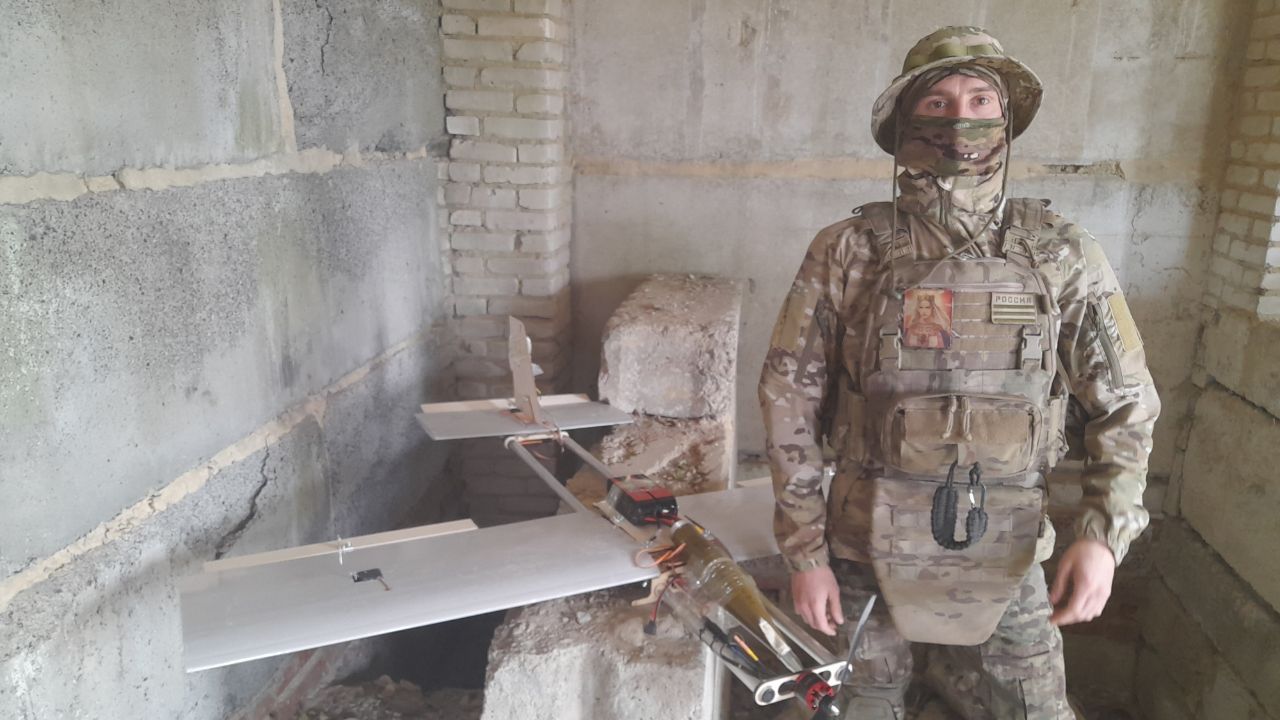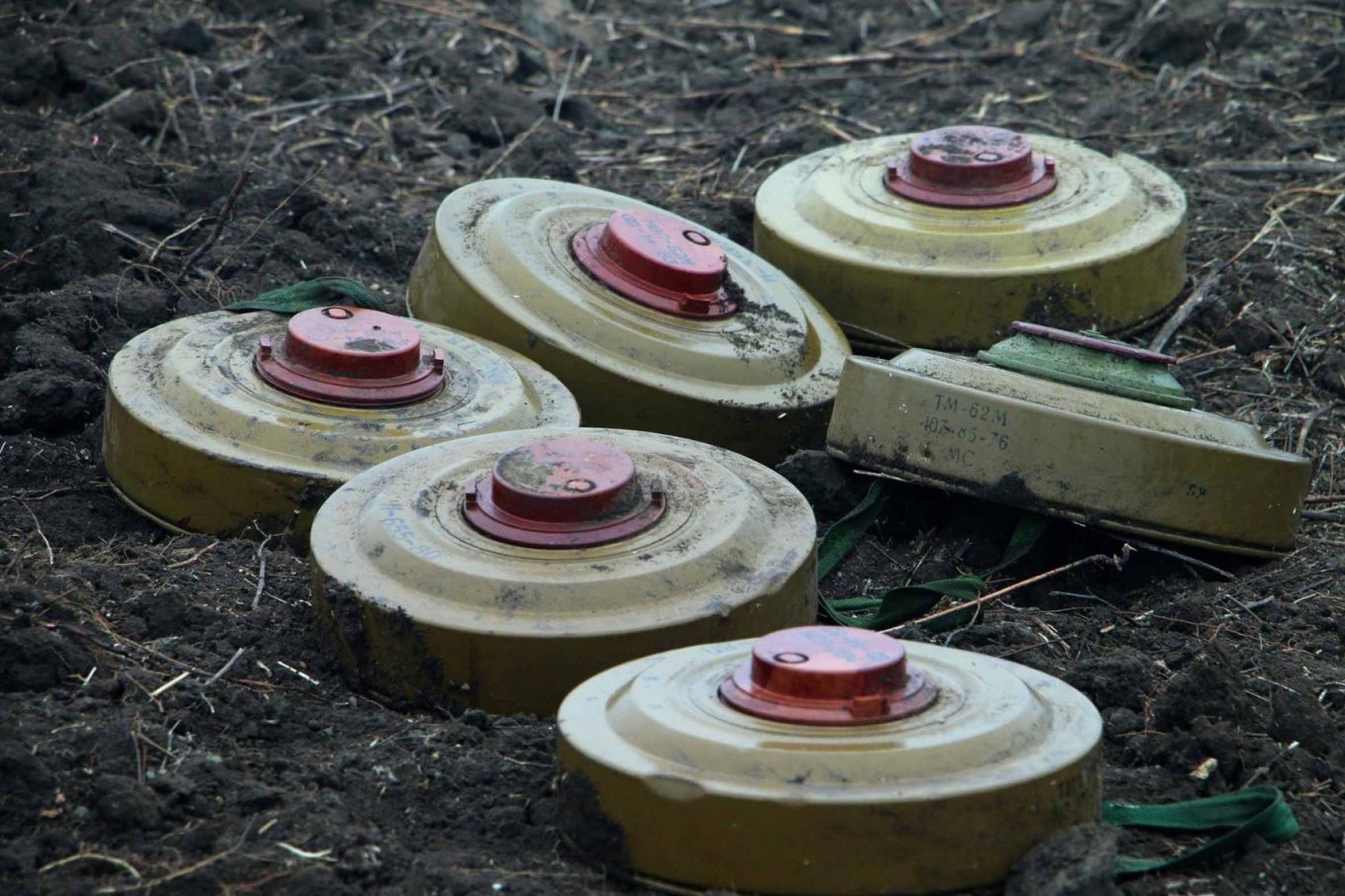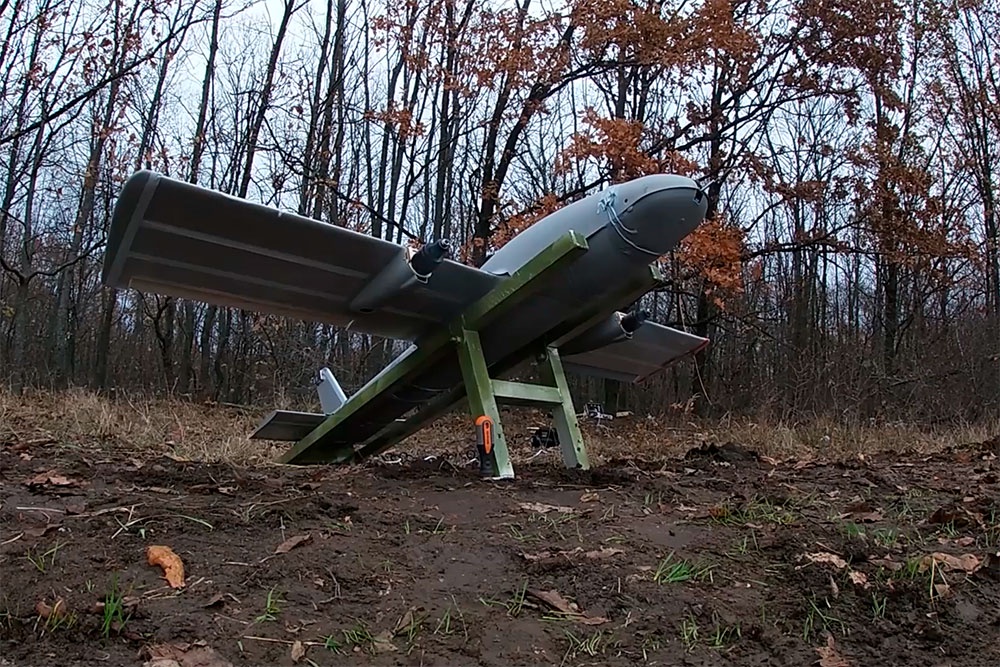The Russian military is actively employing aircraft-type kamikaze drones that are designed with minimal costs in mind. In simple terms, they are constructed with the least expenditure on production and materials, essentially "made from sticks," as the primary objective of these drones is to complete a single flight in their lifetime.
Previously, these drones carried relatively conventional warheads, such as a cumulative grenade from an RPG-7, or a cumulative sapper charge KZ-6, like in the "Lancet", but now they have transitioned to much larger and more dangerous munitions.

Increasingly, the enemy flaunts the use of these strike drones equipped with TM-62 anti-tank mines, which weigh around 10 kg, with over 7 kg being the explosive material. They are utilized by the enemy to strike the positions of Ukrainian defenders.

However, in this case, launching the "Molniya" UAV from ground level using a standard catapult is no longer feasible. The drone immediately sinks several meters after launch. This is why the Russians have started to elevate the launchers to the upper floors of buildings. This observation was made by Serhiy "Flash" Beskrestnov, an expert in electronic warfare and UAVs.
It is also worth noting that with this kind of setup, part of the drone's fuselage must be removed, which results in poorer aerodynamic qualities. Additionally, the increased payload means reduced flight range and diminished maneuverability.
At the same time, there have been numerous instances of using such types of drones, and aside from the "Molniya" UAV, there are also mentions of the twin-engine version "Molniya-2" and "Privet-82," operating at ranges exceeding 30 km. However, it is quite difficult to determine exactly how much the range of Russian kamikaze drones has decreased when carrying non-standard payloads.

Nevertheless, the enemy's reliance on multi-story buildings for their deployment is a significant factor that helps narrow down the search for launch points. This is particularly relevant given the reduced operational range of these drones when carrying TM-62 mines.